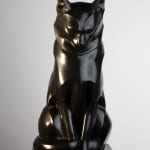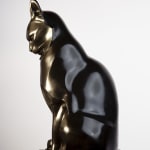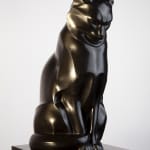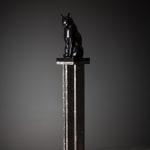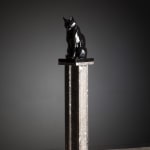




Edouard-Marcel Sandoz French, 1881-1971
Seated Cat, 1920-21
Hand-carved sculpture in black Belgian marble, on a square base
Height: 16.9 in.
Length: 9 in.
Depth: 8.6 in.
Length: 9 in.
Depth: 8.6 in.
One-of-a-kind
Signed by the artist on the base “E.M. Sandoz” Conceived in 1912 and executed in 1920-21
Further images
Exhibitions
